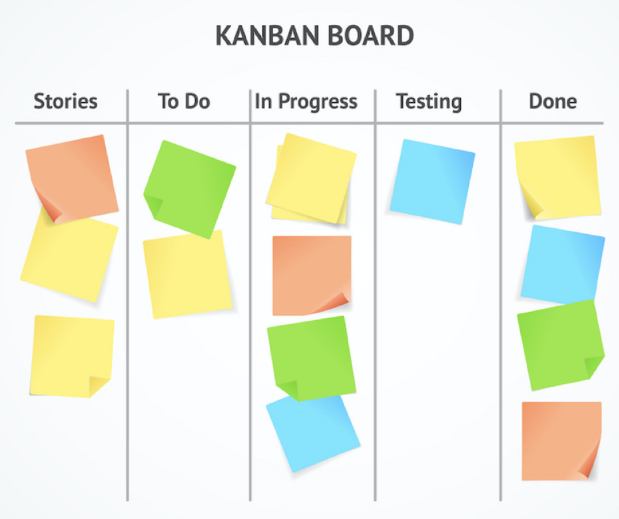Kanban Board - Agile Project Chart

What is a Kanban Board? A Kanban Board is a visual tool used to manage workflow in an Agile project. It consists of a board with columns representing different stages of the workflow, and task cards representing individual work items. As tasks move through the workflow, they are moved from one column to the next, providing a clear and concise visual representation of the project's progress.

Pros of a Kanban Board:
- Enhances visibility: By providing a clear visual representation of the project's progress, a Kanban Board allows all team members to easily see the current state of the project, which enhances communication and transparency.
- Improves efficiency: By providing a clear understanding of the work in progress, a Kanban Board can help to identify bottlenecks and areas where work is piling up, allowing for quick and effective action to be taken to keep the project moving forward.
- Promotes flexibility: A Kanban Board is highly customizable and can be adapted to fit the specific needs of a project, which makes it a versatile tool for managing a wide variety of Agile projects.
Cons of a Kanban Board:
- Requires discipline: To be effective, a Kanban Board requires all team members to consistently update the board as work progresses, which can be challenging if team members are not fully committed to the process.
- Limited scope: While a Kanban Board is an effective tool for managing workflow, it is not well-suited to managing larger projects that require more detailed planning and oversight.
- May be difficult to implement: Introducing a new tool like a Kanban Board can be challenging, especially if team members are unfamiliar with Agile methodologies or resistant to change.